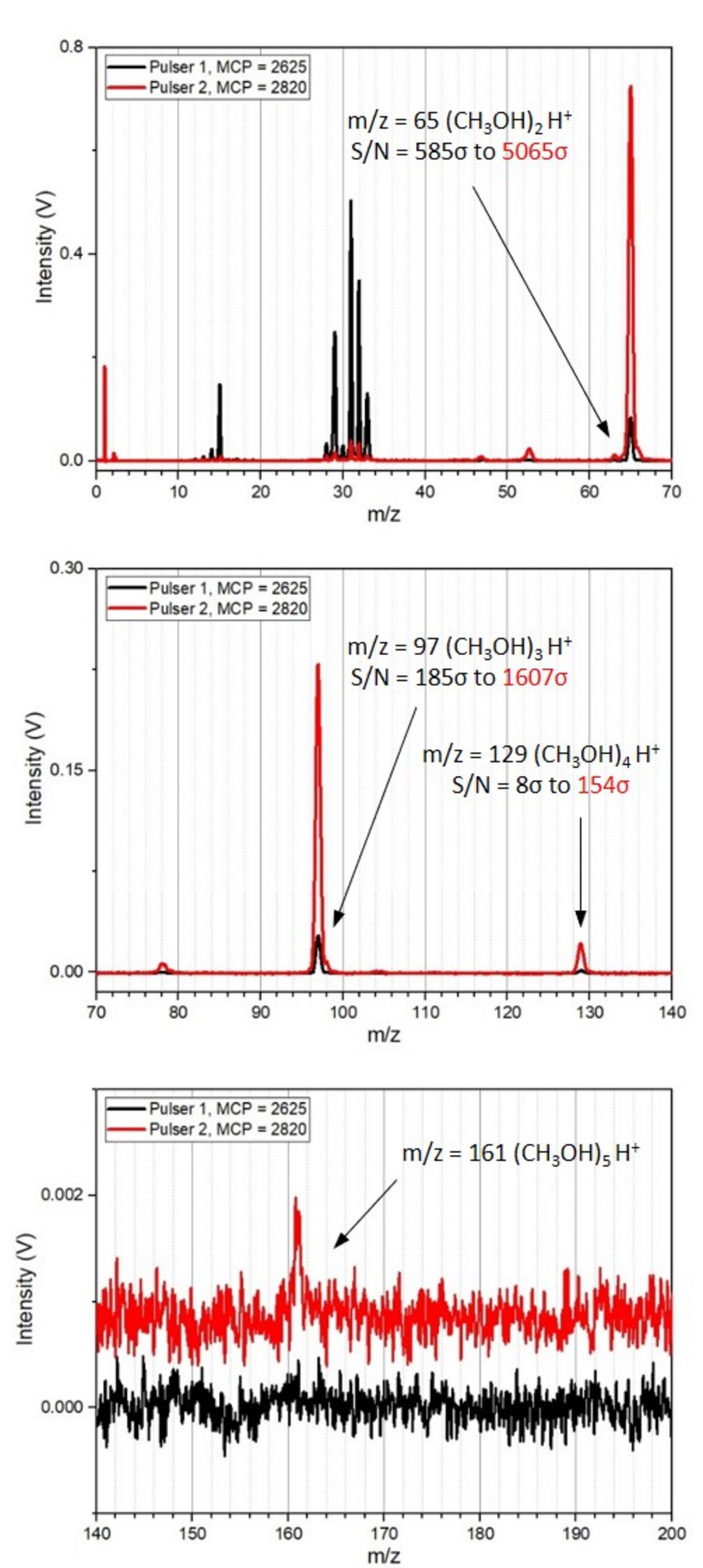New center article - Pranjal Samarth
Title: Pulsed ion deflection to overcome detector saturation in cryogenic ice sampling

Summary:
As of Spring 2024, around 300 distinct molecular species, including dozens of complex organic molecules (COMs), have been identified in the interstellar and circumstellar medium. It is generally accepted that a substantial amount of these COMs is formed on icy dust grains. Over the years many different laboratory techniques have been introduced to study the formation of these species in controlled environments. Amongst them, in 2014, we introduced a new experimental approach to study the UV photo-processing of relevant cryogenic ices using laser ablation in a combination of ionization and time-of-flight mass spectrometry (ToF-MS). The setup, Mass Analytical Tool to Research Interstellar ICES (MATRI2CES), allowed us to detect newly formed species at low abundances as a function of VUV fluence, while overcoming limitations involved in other methods such as being able to detect IR inactive modes and being able to detect molecules at cold temperatures without the destruction of the ice. However, we found that with the increase in molecular complexity over the years, the detection of larger photoproducts was hindered by the dynamic range (saturation) of detectors used.
In this work, we introduce a method to overcome this issue that we expect to be useful for similar applications in laboratory astrochemistry and other research fields. The concept is based on a precisely controlled high-energy pulser that regulates the voltage across the deflection plates of the ToF-MS instrument to deflect the most abundant species and prevent them from reaching the detector. In this way, the detector sensitivity can be increased from an operating voltage of 2500 V up to 3000 V. The applicability is first illustrated in the simple case of an argon matrix, where 40Ar+ ions are deflected to increase the detection sensitivity for 40Ar2+ at m/z = 20 and 40Ar2+ at m/z = 80 by a factor 30. Similarly, it is shown that substantially larger complex organic molecules (up to m/z = 180), can be measured for UV irradiated methanol ice.
Article link: https://pubs.aip.org/aip/rsi/article/95/2/023304/3267937/Pulsed-ion-deflection-to-overcome-detector
